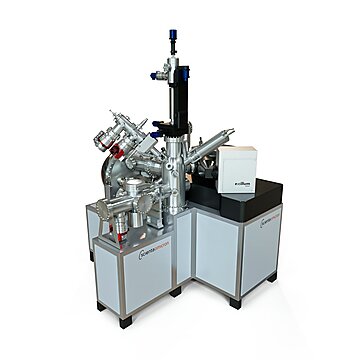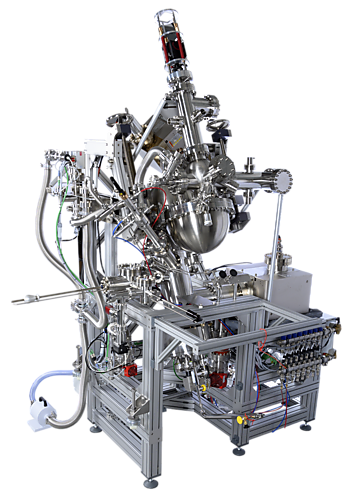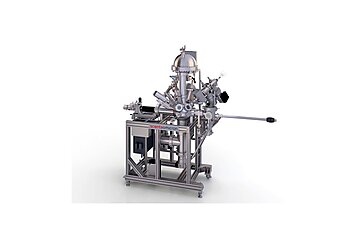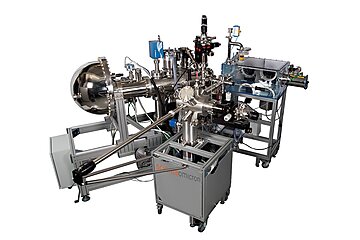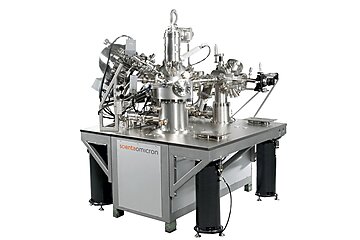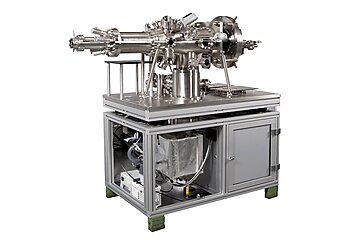Electron Spectroscopy Systems
In 1983 – two years after receiving the Nobel Prize – Prof. Kai Siegbahn co-founded Scienta for the continued develoment of electron spectrometers and systems. Since the start, we have been the market leading, most innovative supplier of high-end photoelectron spectrometers.
Please contact us with ideas on how we can develop the future of electron spectroscopy together.
ARPES Lab
Angle-Resolved Photoelectron Spectroscopy (ARPES) has emerged as the most powerful technique to understand the electronic structure of materials and what can influence their physics and chemistry. The ARPES Lab is designed to maximise the advantages gained from the revolutionary DA30-L hemispherical high-resolution analyser with its patented in-lens deflector. The analyser measures the full 3D surface cone of a band-structure without sample tilt.
DeepCore-X
Designed for advanced surface and bulk materials research, DeepCore-X enables high-resolution X-ray Photoelectron Spectroscopy (XPS) and Hard X-ray Photoelectron Spectroscopy (HAXPES) in a single, laboratory-based instrument. With its high-flux Ga Kα MetalJet F-series source (9.25 keV) and the synchrotron-proven EW4000 analyser, DeepCore-X delivers synchrotron-like performance while maintaining ease of use in a compact system. Automation of sample handling, smart workflows, and camera-assisted navigation make DeepCore-X a highly productive and accessible platform for every level of expertise.
NanoESCA
The NanoESCA is an energy-filtering photoemission microscope which can easily switch between the imaging of the momentum space and the real space of photoemission electrons. The wide range of measurement modes makes it predestined for momentum microscopy, ARPES of very localised features and imaging spectroscopy (e.g. with x-ray lab-source or synchrotron).
BAR XPS
It is estimated that up to 90% of chemical products are produced via catalysis. Many heterogeneous catalytic reactions occur at high pressures and temperatures. To study such catalytic reactions, researchers at Stockholm University have constructed an instrument based on Scienta Omicron’s electron spectrometer capable of measuring XPS under conditions of > 1 bar of pressure in the vicinity of the catalytically reactive surface. Through collaboration this capability is available through Scienta Omicron.
XPS Lab
The XPS Lab has been designed to combine outstanding quantitative XPS performance and ease of operation with a modular sample handling concept. This X-ray photoelectron spectrometer can host complementary surface analytical techniques, like AES and UPS, to enhance its characterisation capabilities. The exceptional value of the XPS Lab is based on the high-transmission high-speed Argus CU hemispherical analyser.
HiPP Lab
The HiPP Lab is a state of art ambient pressure photoelectron spectroscopy (APPES) system designed for XPS of solid, gas and/or liquid sample environments under several mbar. It is optimized for speed to result by its stability, simplicity and user friendly design. The system is based on the most modern concepts of APPES, including features like easy accessible chamber, small spot light source and high throughput analyser with swift acceleration mode.
NanoScan Lab
The NanoScan Lab is a versatile tool for surface analysis on the nanoscale. Based on a UHV-version of Zeiss’ Gemini SEM column, there is a wide range of options, such as Auger electron microscopy and spectroscopy (SAM, AES), depth profiling, SEM with Polarization Analysis (SEMPA), focussed ion beam milling (FIB), X-ray photoelectron spectroscopy (XPS), e-beam lithography (EBL), and energy-dispersive X-ray spectroscopy (EDX).
PEEM Lab
The PEEM Lab is a UHV system with small foot-print tailored for the needs of daily PEEM work. It provides ports for various excitation sources, evaporators a sputter cleaning source and sample heating. In addition, the system is also designed to house a dedicated LHe cooled 4 axis sample stage for PEEM operation below 30K.


